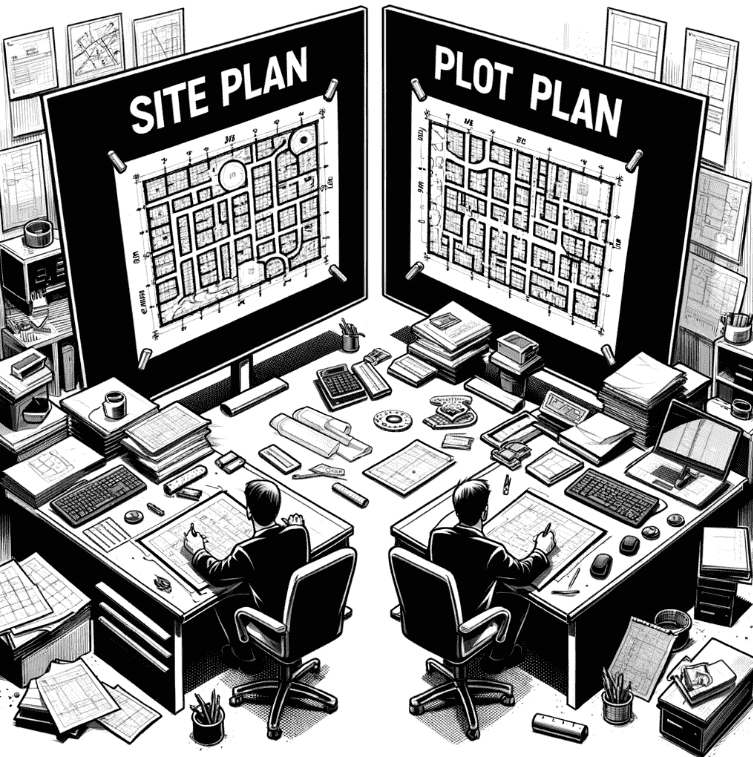You know that feeling when you’re lost in a maze of jargon, trying to differentiate between a site plan and a plot plan? It’s like trying to tell Clark Kent from Superman, isn’t it? Not to worry. We’re about to crack this code and put these elusive terms into perspective.
To begin with, let’s talk about the apparent mirror reflections: site plans and plot plans.
- Purpose: Whether you’re dealing with a site plan or a plot plan, the mission is singular: create a detailed blueprint of your architectural design, illustrating the layout of your construction project.
- Contents: Each plan will meticulously detail your project, including building location, parking spaces, landscaping, and utilities.
- Usage: Both of these plans play key roles in securing the necessary permissions and permits for construction.
However, there’s a bit of a plot twist. Traditional wisdom tells us that site plans and plot plans differ in their level of detail and scale. But it’s more like opting for a larger or smaller cup of coffee at your favorite cafe – the primary ingredients remain the same, the quantity varies based on your taste.
- Scale: Site plans are often referred to as the big-picture guys, offering a comprehensive aerial view of your entire property. Conversely, plot plans are like a magnifying glass focused on a specific structure within your property. However, the scale really depends more on your specific project’s needs rather than whether it’s officially called a site plan or plot plan.
- Detail: It’s often believed that site plans are the heavyweights with intricate detail, while plot plans are their lighter counterparts. The reality? Both can range from minimalist to intricate, contingent on the complexity of your project and the requirements set by planning authorities.
- Interchangeability: Given the minimal difference based primarily on project requirements and not the inherent nature of these plans, “site plan” and “plot plan” can be used interchangeably. The key is to ensure that whichever term you use, the plan serves your project’s needs and satisfies the planning authorities’ checklist.
In short a plot plan or site plan is a comprehensive blueprint that provides an aerial perspective of a proposed development on a property, detailing the placement of structures, landscaping, utilities, and more.
To wrap up, remember that the crux is to simplify the complexity and focus on what aligns best with your project’s objectives. Don’t get tangled in the web of terminologies; instead, concentrate on what communicates your project’s vision most effectively.
This approach not only paves the way for a seamless dialogue with planning officials but also ensures an efficient development process. Because, in urban planning and life, the goal is to turn plans into tangible reality.
